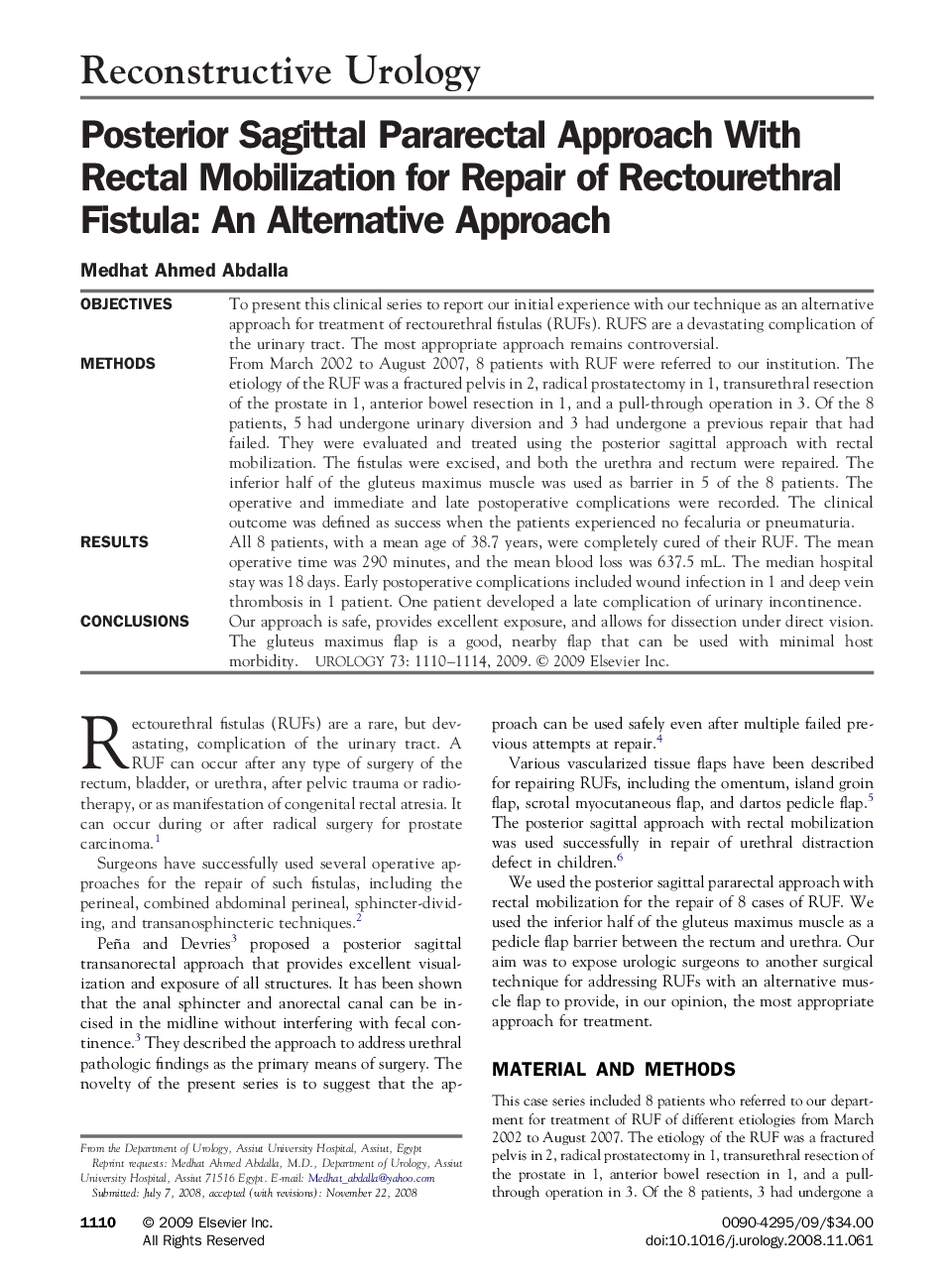| Article ID | Journal | Published Year | Pages | File Type |
|---|---|---|---|---|
| 3903067 | Urology | 2009 | 5 Pages |
ObjectivesTo present this clinical series to report our initial experience with our technique as an alternative approach for treatment of rectourethral fistulas (RUFs). RUFS are a devastating complication of the urinary tract. The most appropriate approach remains controversial.MethodsFrom March 2002 to August 2007, 8 patients with RUF were referred to our institution. The etiology of the RUF was a fractured pelvis in 2, radical prostatectomy in 1, transurethral resection of the prostate in 1, anterior bowel resection in 1, and a pull-through operation in 3. Of the 8 patients, 5 had undergone urinary diversion and 3 had undergone a previous repair that had failed. They were evaluated and treated using the posterior sagittal approach with rectal mobilization. The fistulas were excised, and both the urethra and rectum were repaired. The inferior half of the gluteus maximus muscle was used as barrier in 5 of the 8 patients. The operative and immediate and late postoperative complications were recorded. The clinical outcome was defined as success when the patients experienced no fecaluria or pneumaturia.ResultsAll 8 patients, with a mean age of 38.7 years, were completely cured of their RUF. The mean operative time was 290 minutes, and the mean blood loss was 637.5 mL. The median hospital stay was 18 days. Early postoperative complications included wound infection in 1 and deep vein thrombosis in 1 patient. One patient developed a late complication of urinary incontinence.ConclusionsOur approach is safe, provides excellent exposure, and allows for dissection under direct vision. The gluteus maximus flap is a good, nearby flap that can be used with minimal host morbidity.
